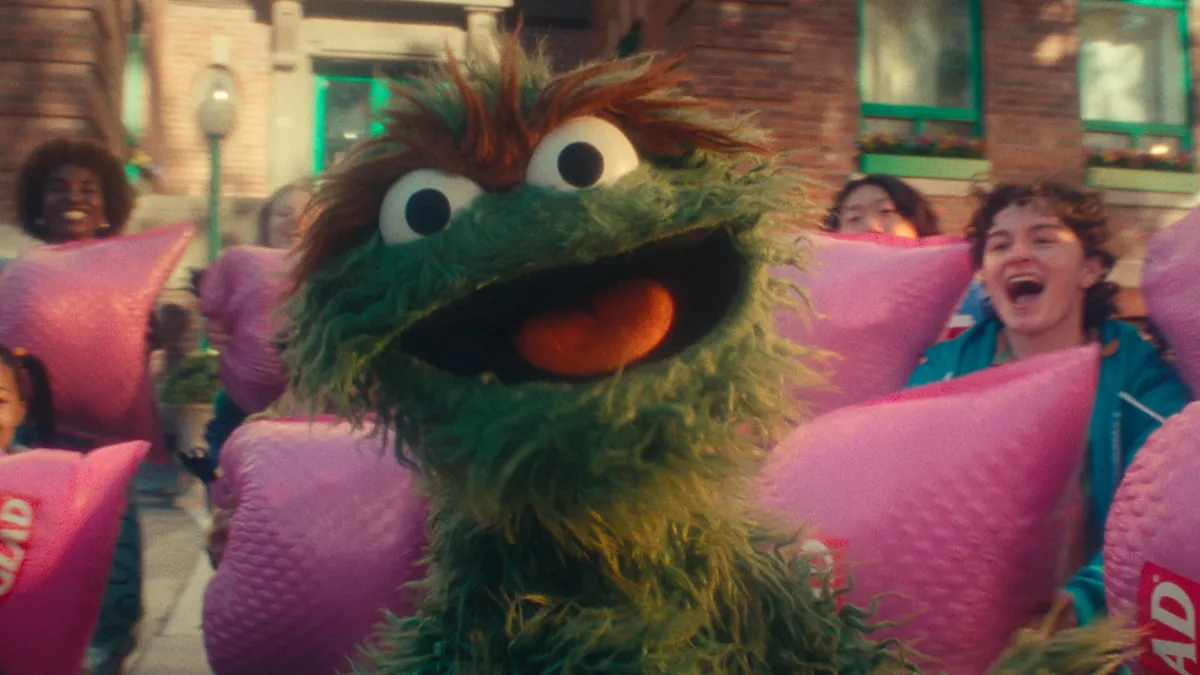At the beginning of 2016, there were no chatbots on Facebook Messenger. There are now well over 30,000 active on the platform, but limited functionality raises the question of their impact during the busy holiday season.
It's been a breakout year for bots, as they've gained traction with brands through a bleeding edge appeal and the ability to potentially automate some of the more mundane aspects of business. Heading into holiday crunch time, when customer service centers become bogged down and shopping carts, both online and off, are filled to the brim, this tech would seem poised for a major boon. Why should anyone dedicate time and effort to dealing with waves of complaints when AI can do it for them?
Well, because despite the media hype, the technology simply isn’t there yet.
“The conversations aren’t fluent or smart enough to either trick the consumer to believe they’re talking to a human, or to deliver a good enough experience so that the human doesn’t care,” said Dean Withey, the CEO of ubisend, a mobile messaging solutions firm.
Though chatbots appear to have blown up on Facebook Messenger, with major brands like Domino’s Pizza testing ordering through the format, hard numbers show that usage remains niche. A recent Forrester report titled “The State of Chatbots” suggests that buzz around chatbots as a "world-changing technology” has actually propelled them “toward the peak of inflated expectations.”
“Only 4% of digital business professionals that we’ve surveyed are actually using chatbots,” said Andrew Hogan, an analyst serving customer service professionals at Forrester. “What’s really happening is that there’s been an explosion of attention and development [...] but not necessarily a real business impact.”
While this holiday season might not be the true proving ground for the tech, experts emphasize that brands should still start working with chatbots immediately, as they are bound to become a key tool in the near future. Facebook Messenger in particular is shaping up to be a lead driver of this change, as it is beginning to iterate more rich media options for brands to use.
“It’s critical to learn and test now so that then you can be more successful next year when it will have a greater impact,” said Hogan. “Any business that waits will have to do some real work to try and recover, and they could find themselves behind like they found themselves behind with mobile.”
The best way to get started learning is to understand what distinguishes the different chatbots, and what the limitations of the different types of the technology are.
“It’s critical to learn and test now so that then you can be more successful next year when it will have a greater impact.”

Andrew Hogan
Analyst serving customer service professionals at Forrester
Choosing a bot
Per ubisend's Withey, there are two essential models of chatbots brands can use: Purely machine-powered interfaces, which are most popular with tech geeks but not yet capable of mainstream consumer interactions, and more linear, guided experiences that are driven by messages, button prompts and human support.
Guided experiences are more likely to become a key driver of engagement for the moment, with ubisend's research showing mobile messaging content attaining an 85% open rate and 53% click rate — far higher than the 20% open rates and 2% click rates expected on email.
Guided chatbots of this kind are far more popular with brands, but also leave customer care providers with a key decision to make: To announce up front that the service offered is automated and therefore limited — the approach Twitter is taking with its recently launched bot features — or to try and convince users that they’re actually chatting with a human.
The latter strategy is part of what gives a chatbot its “wow” factor, but can also lead to serious obstacles when the illusion fails, which reports suggest frequently happens.
“People will find ways to try to accomplish their goals that aren’t what you expected, and figuring out ways for a chatbot to guide them is a major issue,” said Hogan. “You can’t just tell them ‘I’m sorry I didn’t understand that.’”
Ghosts in the machine
Humans often have to pick up the slack when a chatbot runs into errors. While it's not likely bots will become overloaded with incoming traffic, they can bog down response centers that have to monitor conversations as they would a social platform like Hootsuite or Facebook.
Withey said that many of the big brands using bots are favoring the “trick” tactic, but only because they’re well-versed in fields like social and are therefore prepared to handle the sharp uptick in queries that pour in during crunch times like the holidays.
“The difficulty will come from scaling the staffing to deal with chatbots that don’t provide an adequate service or answer customers’ questions to completion," he added in an email to Marketing Dive.
Businesses that fail to properly adjust for these shortcomings or over promise on what their service can provide will ultimately end up in an egg-on-face scenario that might be a big turn-off for consumers.
“If you believe you’re going to roll a chatbot out there and put a lot of marketing muscle behind it [...] and then fail to have a team that can answer the questions the chatbot can’t handle, you’d have really angry customers who would quit on your chatbot and not give it another try,” said Hogan.
AI conversational technology is unique in that much of what it learns comes directly from making these kinds of mistakes. Fully automated chatbots will solve the human element of the customer service equation in time but are years away from being adequately responsive on their own.
“Simple queries can be resolved with a relatively small amount of training — just a year or two, sometimes even shorter,” said Hogan. “More complicated questions, you’re looking at years [...] five-plus for the most complicated ones.”
"If a company’s chatbot doesn’t take a user from initial contact all the way to purchase [...] the company better make sure it has enough humans to deal with the fallout."

Dean Withey
CEO at ubisend
The data problem
Because the technology is so nascent, bots face issues that extend beyond a limited vocabulary. Retention of information is one area where bots, even the most successful ones, frequently hit a wall.
“There’s a real issue with persistence of data that customers enter,” said Hogan. “If you drop your conversation halfway through the way you would when putting something in a shopping cart, and then walk away from it as many of us do [...] you have to frequently re-enter all of that data.”
The failure to retain customer inputs is especially frustrating because the inputs a bot forgets will sometimes still be visible further up in the text of a conversation. Hogan added this could “absolutely” be a problem for holiday online and mobile shopping when consumers are frequently juggling multiple items at once.
Lack of persistence in data is unfortunately not something brands can do much about.
“If you think of all the platforms and software that goes behind marketing automation, there’s a lot of APIs and connectivity to different services that brings that solution together,” said Withey. “That just doesn’t exist for messaging apps yet.”
Given the lack of back-end technology and infrastructure, the general rule to then follow when incorporating brand bots is to keep it simple.
“The big thing is remembering how narrow you can make your execution,” said Hogan. “If you try to have [a bot] do too many different things, it will probably not be successful, particularly from a commerce perspective.”
Content and copy are overlooked
Though the e-commerce capabilities of many bots remain limited, there are other avenues to pursue with the technology that can enrich customer and brand experiences.
Dissemination of content has been undervalued in the past, but many brands are now starting to catch up, according to Withey, whose company has seen success in using bots to link to other resources rather than try to provide solutions on their own.
“Rather than saying ‘how can we help?’ it’s saying ‘here’s the latest updates from our blog’ or 'here’s how to get help by visiting our support area,’” he said. “It’s a catch-all approach at the moment.”
Because these interactions — and almost all chatbot activities — are language-driven, it’s essential that marketers put time and resources into ensuring the actual copy bots “speak” is tight, clean and easy to follow. Both Withey and Hogan say this is an area where many brands are falling short.
“We’ve looked at a lot of chatbots that struggle with how to word things, or they’re using marketing jargon that customers don't understand,” said Hogan.
Failsafe and troubleshooting options are in short supply because multimedia is limited, he added. And a chatbot can’t necessarily post a product image to help guide conversations.
“Instead you have these big terms that aren’t necessarily helpful, kind of like you had in the early days of websites,” he said.
“We’ve looked at a lot of chatbots that struggle with how to word things, or they’re using marketing jargon that customers don't understand.”

Andrew Hogan
Analyst serving customer service professionals at Forrester
Chatbots are the future
While chatbots are undoubtedly in their own "early" phase, their rapid proliferation on platforms like Facebook Messenger show they're primed to take over. Withey noted that Messenger is already becoming the lead platform for chatbots in the West, and will likely be a key driver of growth and development for the technology going forward.
Facebook has started introducing a variety of “message templates” to help address aforementioned content and copy issues. The templates provide different frameworks for constructing conversations, from plain texts, to buttons to images with headlines and subtitles — all of which could serve as easy short-term solutions.
“Facebook is actually iterating really quickly and delivering much more rich media options rather than just relying on the language,” said Withey.
“They’re realizing language is very important and actually compounded [with] customer support, customer service and e-commerce,” he continued. “[A]ll of the sudden the brand of a company is being absorbed, not by logo or colors or design or usability of a website, but by language, tone, responsiveness, complicated terms being used and the humor of the language.”
As language and multimedia capabilities improve over time, chatbots' aptitude in providing customer service will grow too, and Withey detailed a “pie in the sky scenario” where consumers migrate away from screens and computers in favor of language-driven technology.
“At the end of the day, chatbots are the future,” he said. “It’s the way we’re all going to be talking and communicating with brands and businesses [...] it just needs another couple of months to hit the main consumer industry.”



















